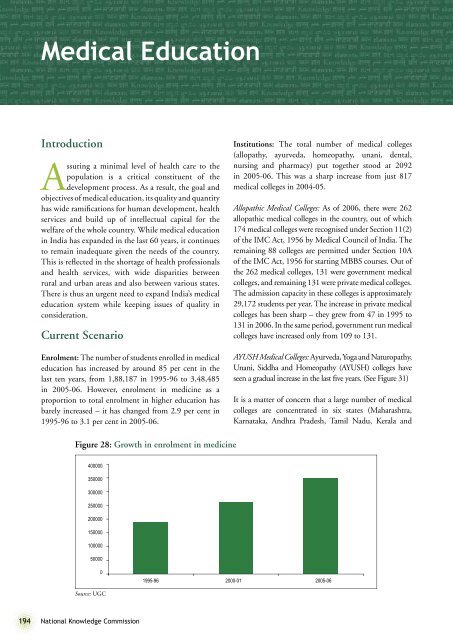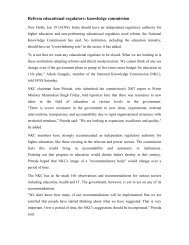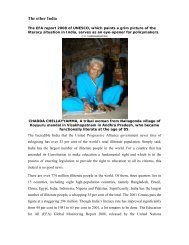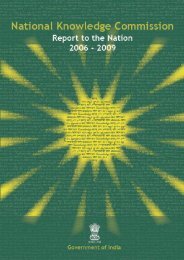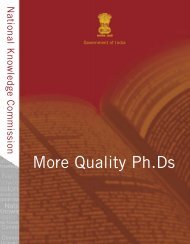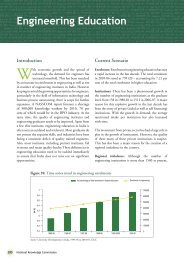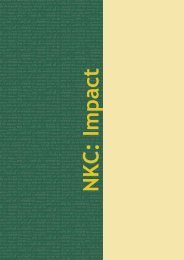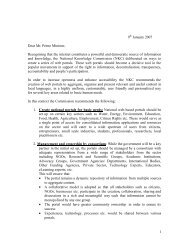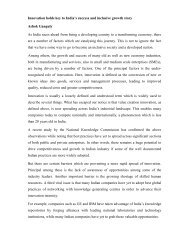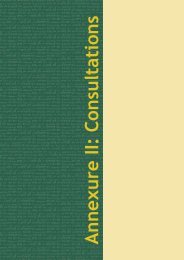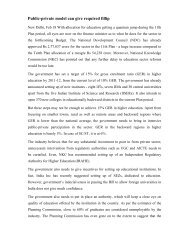National Knowledge Commission Report to the Nation 2009: Baseline
National Knowledge Commission Report to the Nation 2009: Baseline
National Knowledge Commission Report to the Nation 2009: Baseline
Create successful ePaper yourself
Turn your PDF publications into a flip-book with our unique Google optimized e-Paper software.
Medical EducationIntroductionAssuring a minimal level of health care <strong>to</strong> <strong>the</strong>population is a critical constituent of <strong>the</strong>development process. As a result, <strong>the</strong> goal andobjectives of medical education, its quality and quantityhas wide ramifications for human development, healthservices and build up of intellectual capital for <strong>the</strong>welfare of <strong>the</strong> whole country. While medical educationin India has expanded in <strong>the</strong> last 60 years, it continues<strong>to</strong> remain inadequate given <strong>the</strong> needs of <strong>the</strong> country.This is reflected in <strong>the</strong> shortage of health professionalsand health services, with wide disparities betweenrural and urban areas and also between various states.There is thus an urgent need <strong>to</strong> expand India’s medicaleducation system while keeping issues of quality inconsideration.Current ScenarioEnrolment: The number of students enrolled in medicaleducation has increased by around 85 per cent in <strong>the</strong>last ten years, from 1,88,187 in 1995-96 <strong>to</strong> 3,48,485in 2005-06. However, enrolment in medicine as aproportion <strong>to</strong> <strong>to</strong>tal enrolment in higher education hasbarely increased – it has changed from 2.9 per cent in1995-96 <strong>to</strong> 3.1 per cent in 2005-06.Institutions: The <strong>to</strong>tal number of medical colleges(allopathy, ayurveda, homeopathy, unani, dental,nursing and pharmacy) put <strong>to</strong>ge<strong>the</strong>r s<strong>to</strong>od at 2092in 2005-06. This was a sharp increase from just 817medical colleges in 2004-05.Allopathic Medical Colleges: As of 2006, <strong>the</strong>re were 262allopathic medical colleges in <strong>the</strong> country, out of which174 medical colleges were recognised under Section 11(2)of <strong>the</strong> IMC Act, 1956 by Medical Council of India. Theremaining 88 colleges are permitted under Section 10Aof <strong>the</strong> IMC Act, 1956 for starting MBBS courses. Out of<strong>the</strong> 262 medical colleges, 131 were government medicalcolleges, and remaining 131 were private medical colleges.The admission capacity in <strong>the</strong>se colleges is approximately29,172 students per year. The increase in private medicalcolleges has been sharp – <strong>the</strong>y grew from 47 in 1995 <strong>to</strong>131 in 2006. In <strong>the</strong> same period, government run medicalcolleges have increased only from 109 <strong>to</strong> 131.AYUSH Medical Colleges: Ayurveda, Yoga and Naturopathy,Unani, Siddha and Homeopathy (AYUSH) colleges haveseen a gradual increase in <strong>the</strong> last five years. (See Figure 31)It is a matter of concern that a large number of medicalcolleges are concentrated in six states (Maharashtra,Karnataka, Andhra Pradesh, Tamil Nadu, Kerala andFigure 28: Growth in enrolment in medicine4000003500003000002500002000001500001000005000001995-96 2000-01 2005-06Source: UGC194 <strong><strong>Nation</strong>al</strong> <strong>Knowledge</strong> <strong>Commission</strong>


